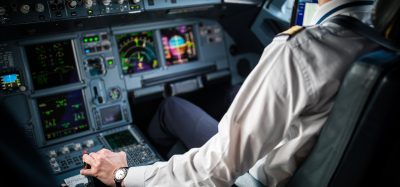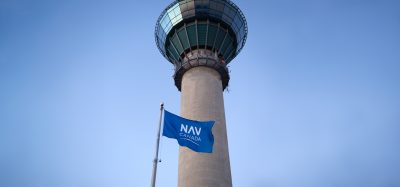Runway bottleneck optimising the optimum
- Like
- Digg
- Del
- Tumblr
- VKontakte
- Buffer
- Love This
- Odnoklassniki
- Meneame
- Blogger
- Amazon
- Yahoo Mail
- Gmail
- AOL
- Newsvine
- HackerNews
- Evernote
- MySpace
- Mail.ru
- Viadeo
- Line
- Comments
- Yummly
- SMS
- Viber
- Telegram
- Subscribe
- Skype
- Facebook Messenger
- Kakao
- LiveJournal
- Yammer
- Edgar
- Fintel
- Mix
- Instapaper
- Copy Link
Posted: 3 April 2007 | Dieter Kaden, Chairman and Chief Executive Office and Ralph Riedle, Director Operations, DFS Deutsche Flugsicherung GmbH | No comments yet
Delays in air traffic have a great variety of causes that are often aggravated by knock-on effects due to the individual process structure of a flight. Furthermore, it is the weakest link in the aviation chain that determines the success of the overall system. This is most evident in the case of the runway system, the capacity of which often fails to meet the demand. Clever interplay between the partners in air transport – airlines, airports and air navigation service providers – as well as the use of advanced technologies, however, creates new opportunities even at busy international hubs.
Delays in air traffic have a great variety of causes that are often aggravated by knock-on effects due to the individual process structure of a flight. Furthermore, it is the weakest link in the aviation chain that determines the success of the overall system. This is most evident in the case of the runway system, the capacity of which often fails to meet the demand. Clever interplay between the partners in air transport – airlines, airports and air navigation service providers – as well as the use of advanced technologies, however, creates new opportunities even at busy international hubs.
Capacity crunch in Europe
In its recent communication to the Council, the European Commission summarised the effects of the capacity problem as follows: “Given the expected traffic evolution, Europe will face an ever growing gap between capacity and demand. This is referred to as the ‘capacity crunch’. If current capacity levels are not drastically increased, it is estimated that over 60 European airports will be heavily congested and the top 20 airports will be saturated at least 8-10 hours per day by 2025.” Calls for a solution have become even louder following these forecasts, but the reaction of the European Commission has been rather cautious. Due to the complexity of the problem, a golden bullet solution would be hard to find and only a comprehensive bundle of actions would lead to success. The core issue is thus: “The need for a more efficient use of existing runways.”
This requirement is based on a very simple truth. The runway is the weakest link in the process chain of a flight. This is where capacity limits become most evident. Throughput on the runway is clearly subject to physical constraints. This bottleneck is most evident in the approach – and to a lesser extent in departure – while flights scatter into many different directions after take-off. In order to achieve optimum runway use, specially trained air traffic controllers direct aircraft coming in from many different directions onto the runway centreline and the instrument landing system like pearls on a string.
The economic implications of the abstract term ‘capacity’ may be demonstrated by an example given by the European Commission. In its above-mentioned report, the Commission states that airports and airlines could save €1,000 million if the ‘buffers’ built into their schedules to absorb delays were reduced by five minutes.
This aspect becomes all the more significant in the light of the current discussion about the environment. A congested runway means that all arriving aircraft must deviate from their optimum route of flight. This results in speed deceleration, inefficient flight profiles, longer routes of flight and – in the worst case scenario – holding patterns. It often takes hours, or even a whole day, to cut back such delays. Apart from the negative consequences for passengers and airlines, this also affects the environment. The higher fuel consumption leads to higher aircraft emissions and the noise disturbance in the vicinity of the aerodrome may increase.
Unprecedented growth throughout the world
The increasing number of aircraft movements is not only a European issue. Air transport is experiencing unprecedented growth throughout the world. This is particularly true for the airports in the Middle East and China. In its latest annual report, the Airport Council International (ACI) comments that Beijing has an increase of 18 per cent in passenger traffic, 32 per cent in cargo and 10 per cent aircraft movements. The airport comes in 15th place in the 2006 preliminary ranking of passenger volume. Back in 2000, it did not even make it to the top 30.
Airports in the Middle East are recording even higher growth. The parallel expansion of airports is turning Dubai into a transit hub. Increasing numbers of passengers are flying to the Gulf region thanks to recent efforts to promote tourism. Moreover, Dubai Airport has successfully established itself as a cargo stronghold. Expansion is top of the agenda. Development plans for the airport are ready and go far beyond anything Europe has ever seen.
Experience with the new arrival and departure management at other airports has shown that it is never too early to implement modern systems and procedures. If the development and implementation of these highly complex systems is prolonged, there is often a struggle to keep pace with relentless growth at some airports.
Optimising capacity consistently
Germany is a good example of the benefits to be gained in the field of airspace capacity. Controllers have for many years been controlling one of the busiest high-density areas in the world, the axis crossing Germany from the northwest to the southeast. The two international hubs of Frankfurt and Munich are located directly under this ‘highway’ and other major airports are less than an hour away. The situation is indeed very complex, but DFS has succeeded in continuously increasing the capacity in this airspace. In an airspace reorganisation programme called EAM04 carried out in the year 2000, DFS procedure designers developed a new airspace structure to disentangle high-density areas and create control sectors with a more balanced workload distribution. Capacity increases in airspace, however, do not necessarily entail capacity increases on the ground. On the contrary, they may even put more strain on the runway system.
The key role of the air navigation service providers
The issue for air navigation service providers is how they can contribute to further enhancing runway capacity. The physical constraints are obvious. Aerodrome controllers at international hubs have had a high workload for a very long time, so only minor improvements can be expected by further optimising operational procedures. This is why DFS has for several years focused on two central, collaborative procedures.
Collaborative decision-making
Solutions that are sustainable in the long term can only be successful if airports, airlines and air navigation service providers work together. The key word is collaborative decision-making. Successful scenarios have been implemented at the major hubs of Frankfurt and Munich. The partners in air transport – airlines, airports and the military – have to listen carefully to each other and must find efficient solutions together. The process of collaborative decision-making thus leads to a situation that satisfies all parties concerned.
This is a very important aspect that can bring capacity gains and improve punctuality, in particular, at an intermediate stage. However, it must also be realistically acknowledged that, from a certain point on, great endeavours often only accomplish small improvements.
New collaborative technologies
New technologies need to be developed for arrival and departure management that comprise the entire process chain from airspace via the runway to the gate, or even the point of parking.
Dynamic arrival management
In order to improve the aviation process, DFS has developed the 4D Planner, a second-generation arrival manager which has been operationally used at Frankfurt Airport since 2003. It is the first system to permit arrival sequencing on the basis of dynamic or, in other words, real data. The 4D Planner is a much more efficient arrival manager than conventional static planning systems because it enables the dynamic and flexible planning of arrivals with the goal of optimising the use of the limited capacity of runways.
The 4D Planner uses flight plans, radar and weather data as well as aircraft performance data to suggest to the controllers the most efficient sequence of arrivals as well as the best sector handover procedure and landing times. It immediately recognises and handles any deviations between the actual traffic situation and the current planning. The output is the best planning at every radar input cycle. In the case of runway changes or missed approaches, the system automatically makes an up-to-date planning suggestion to the controller. This is an important benefit at a busy hub. The strategy of ‘planning the standards and identifying the exceptions’ reduces the controllers’ workload considerably.
Another advantage of the system is that it covers a large geographical area. In this way, en-route, approach and tower controllers all work with the same and consistent up-to-date planning data. Furthermore, the en-route controllers can sort out the arriving aircraft before handing them over to the approach controllers. This facilitates the coordination between the sectors involved and reduces the need for manual coordination (promoting ‘silent’ coordination). Airspace capacity and runway capacity are used to the full extent and delays are minimised. Less aircraft in holdings and optimal separation of aircraft on final approach leads to lower fuel consumption and less noise and pollution. These benefits are becoming more and more important at international hubs.
Modern departure management
Optimal use of the runway can be achieved through more efficient departure management as well as state-off-the-art arrival management. This would appear to be a relatively simple task. All that needs to be done is to ensure that only the aircraft that is the next to take off is at the runway holding point with running engines. What may seem straightforward at first is indeed quite complex. This is because a number of criteria must be met in order to achieve an optimal departure sequence. When is start-up requested? What taxi times are required by the aircraft to go from the gate to the threshold? How can it be ensured that the push-back vehicles are at the right place at the right time? Is the departure route available? What can be done to avoid aircraft that are not ready for take-off yet blocking the taxiways?
To solve all of these issues, a large number of data must be compiled and complex processes smoothly integrated. This would be a difficult task without the support of electronic tools. The success of such a tool – a departure manager called darts – at Zurich Airport speaks for itself. As with the 4D Planner, darts successfully connects different processes, from en-route clearance and start-up permission to taxiing to the runway right down to the selection of the right departure route.
Looking towards the future
It is easy to be distracted by the sheer innovativeness of the latest developments in departure and arrival management and the benefits for airlines, airports and air navigation service providers. Yet it is important to bear one point in mind. Both systems are currently enhancing the capacity of the same bottleneck, but without coupling arrival and departure management needs. Thus, the controller in the tower must use his knowledge, experience and skills to reap the benefits offered by these systems. To put it another way: He must join the two optimised processes to make one optimal process – and this is a highly complex task.
As part of the third aeronautical research programme, the German Federal Ministry of Economics commissioned DFS to conduct a study with the aim to connect both systems. DFS and industry experts have succeeded in coupling both systems in a cooperative way in order to maximise runway and airport facility usage. This project focused on the validation of the cooperative arrival and departure management. To this end, the entire process chain was validated in a suitable real time simulation environment – from the area control through approach control to the complex processes of ground and apron control and vice versa.
The results of the research programme are promising. Controllers assessed the functionality of the cooperative Arrival and Departure Manager AMAN/DMAN in real-time simulations using Frankfurt Airport as an example. As the cooperative AMAN/DMAN reflects the interactions between the working positions in en-route, approach, tower, ground control and apron services, all of these working positions had to be simulated in order to assess its impact on the complex environment. For this purpose, the radar training simulator was interconnected with a tower simulator.
Arrivals were controlled by the en-route training simulator. Shortly before landing, this traffic is handed over to the tower controller where the remaining flight trajectory is predicted and simulated. Starting at the gate, departures are controlled by the tower simulator comprising apron and tower services. After take-off, aircraft are transferred back to the radar simulator. The cooperative AMAN/DMAN algorithms have been continuously optimised and tested by controllers in several consecutive simulation runs. Cooperative AMAN/DMAN supports the following functionalities:
- Integrated sequence planning
AMAN/DMAN plans an integrated sequence of arrivals and departures for the runways being operated in mixed mode, i.e. departures and arrivals using the same runways. Moreover, the information relevant to planning and controlling is made available at all working positions (en-route, approach, tower, ground and apron control). - High planning stability
On the one hand, the integrated sequence is dynamically planned in line with the current traffic demand. On the other hand, the results of the dynamic planning are so stable that the user can rely on the planning once it has been established. - Best use of capacity
With the coordinated planning of arrivals and departures, the cooperative AMAN/DMAN system optimises the runway system capacity. The outcome improves punctuality during periods of high demand or bottlenecks. - Improvement in communication (silent communication)
Thanks to the harmonised target times at all relevant working positions, the en-route, approach, tower, ground and apron controllers can interact smoothly and efficiently. Situational planning adjustments are displayed without delay at all working positions. - Manual intervention
Controllers can make manual adjustments to the sequence and runway allocation in order to quickly react to changes. - Easy transition
As it is based on well established tools (4D Planner and darts), the cooperative AMAN/DMAN facilitates an easy transition without the introduction of completely new systems. The cooperative AMAN/DMAN solution incorporates the same operational principles as the 4D Planner and darts in a stand-alone setup with the benefit of on-line collaboration.
















